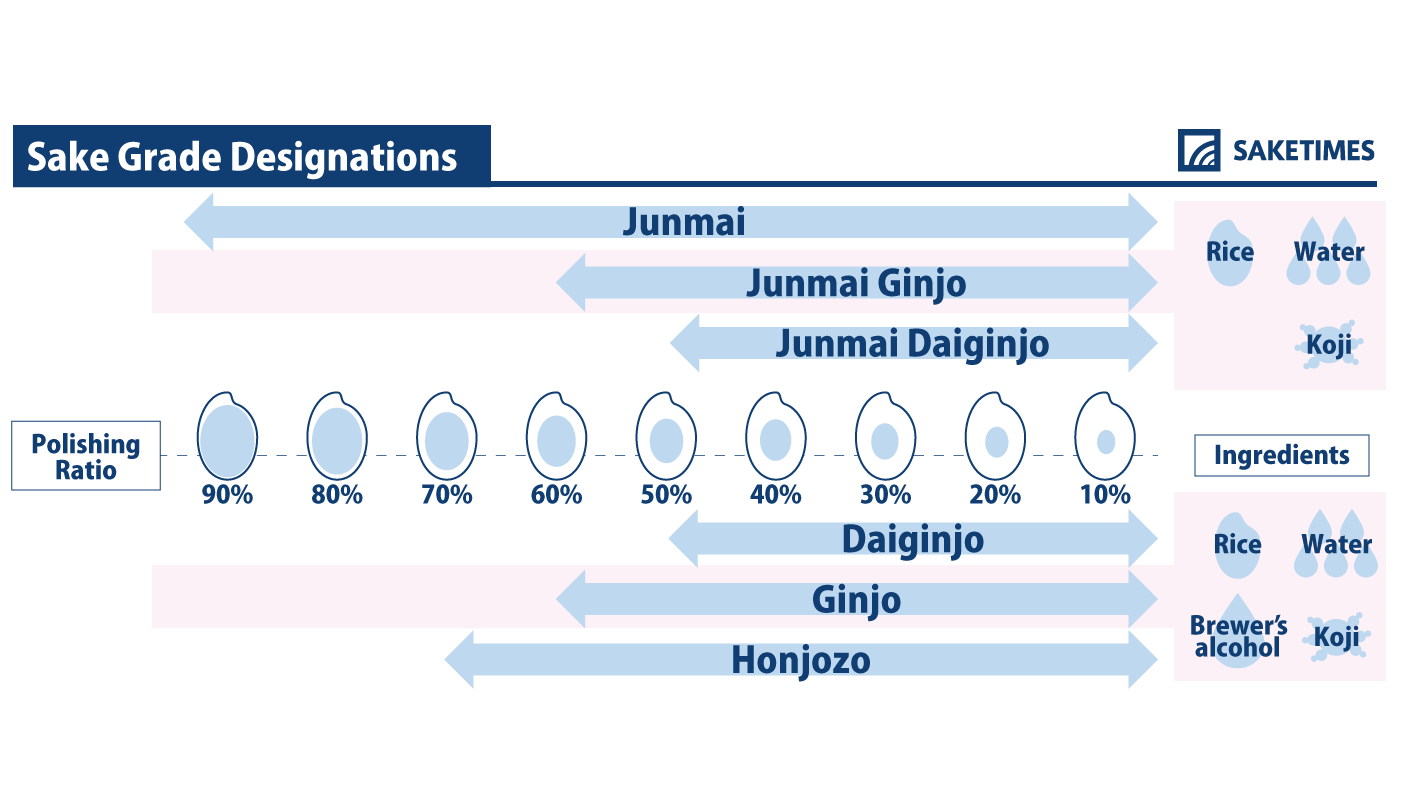
Ginjo (noun)
[Ginjō]
Japanese characters: 吟醸 (吟: 1. to sing or create song or poem; 2. to scrutinize carefully; 醸: brew)
1. Well-polished
Ginjo refers to sake that is made from rice at a polishing ratio below 60% (i.e. more than 40% of the rice grain has been milled away) and brewed over an extended period of time at low temperature. This leads to the fruity and/or floral esters often associated with the style. Aside from the rice polishing ratio, there is no other strict requirement to qualify as ginjo-grade sake. That freedom has resulted in a fair bit of diversity, particularly in recent years.
2. Premium Pricing
Ginjo-grade sake is generally considered a high-quality brew, but the premium prices it commands are due in part to the greater amount of ingredients required to make it. Naturally, the more the rice is polished down, the larger the amount of rice needed to produce a bottle of sake.
3. A Short History
Ginjo-style sake has a fairly short history, with ginjo-like aromas first being noted in the early 1930s. The style first attained consumer awareness and market share in 1975 following the official labeling classification enacted by the Japan Sake & Shochu Makers Association.
Learn More>> Junmai : SAKETIMES GLOSSARY
Learn More>> What is Junmai? Ginjo? Special designated grades – The key to pinpointing particular sakes –
Learn More>> What is the Rice Polishing Ratio?





Comments